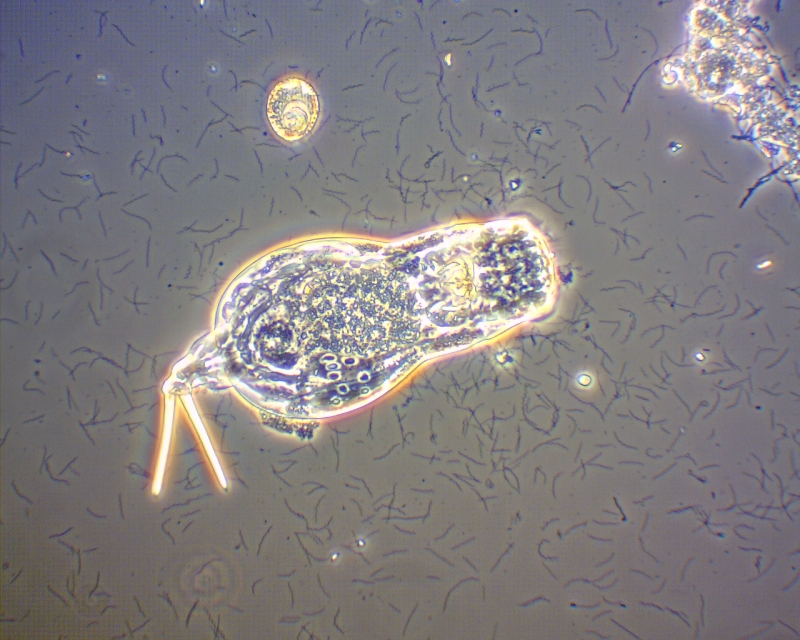Rotifers
See more photos below
Rotifers are metazoa and are the simplest of the multicellular animals. They are found in many different types of water including aeration stabilization basin systems, activated sludge, and some freshwater systems. Rotifers range in size from 40 to 500 µm. They are, in fact, microscopic crustaceans. Rotifers move by swimming freely through the bulk water or crawling. They have a cliliated area at the anterior end (mouth opening) that resembles a “rotating wheel.” This group of cilia at the mouth aids in the feeding and movement of the rotifer. They feed on suspended particles and bacteria. The food is passed into the gut via two grinding plates called “mastax”. Many rotifers also have a posterior podite (foot) which allows them to attach to floc. It usually looks like a forked tail. The main role of rotifers in wastewater systems is the removal of bacteria. They also aid in floc formation. Rotifers thrive in conditions with plenty of oxygen and are an indicator species for low Biochemical Oxygen Demand (BOD), low toxicity, and stable wastewater systems.
They are the most abundant macroinvertebrates in an activated sludge system. In the activated sludge system, rotifers have shown to be helpful in reducing bulking by preying on the filamentous bacteria “Microthrix” which is associated with bulking in wastewater systems. They are mostly found in very stable activated sludge systems. They are excellent indicators of the health of the sludge and suggest whether the sludge is of good quality, is stable, and has plenty of oxygen or not. They are also beneficial to the wastewater system because they stabilize the organic waste, enhance oxygen penetration into the floc, and recycle mineral nutrients. They contribute to floc formation and reduction of final effluent turbidity by removing (consuming) non-flocculated bacteria. Since they are more predominant in older sludge, some wastewater plants use rotifers to identify whether they need to increase wasting.
Rotifers Photos









